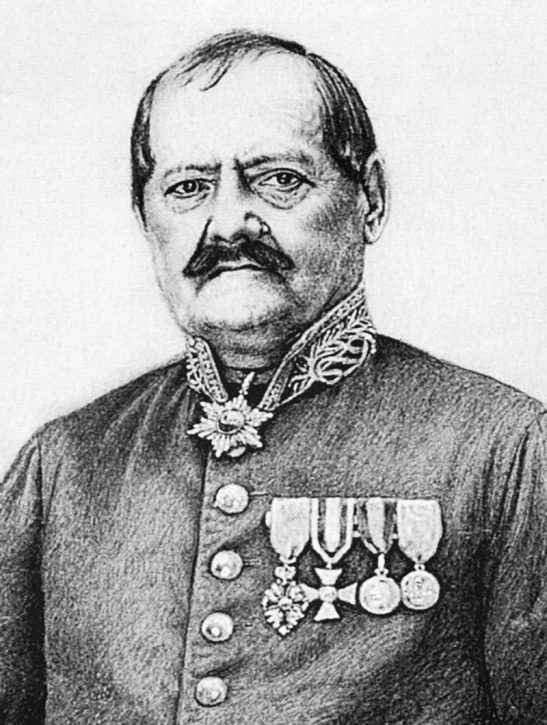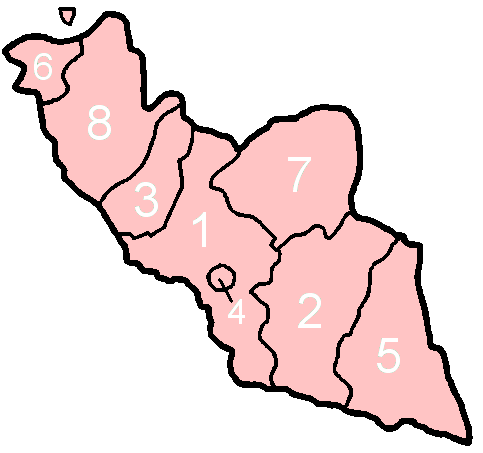|
Ĺžurud
Ĺžurud (anglicized as Shurud), also Shorot () or Shurut () is a village and municipality in the Julfa District of Nakhchivan, Azerbaijan. It is located 23 km to the north of the district center, on the slope of the Zangezur mountain range. It has a population of 180, primarily occupied in farming and animal husbandry. There are a secondary school, a club, a library, a communication center, and a medical center in the village. History Shurut was a small Armenian-populated town during the late medieval period, with churches, schools, monasteries, scriptoriums, and a population of several tens of thousands. It is first mentioned in historical sources from the 13th century. Monuments * St. Hakob-Hayrapet Church was a 12th-century Armenian church located in the center of the village and was destroyed at some point between 1997 and 2006. * St. Astvatsatsin Monastery or Kusakan Monastery was an Armenian monastery located 1 km north of the village and was razed to ground ... [...More Info...] [...Related Items...] OR: [Wikipedia] [Google] [Baidu] [Amazon] |
Naghash Hovnatan
Naghash Hovnatan (; 1661, Shorot, Nakhijevan, Safavid Iran – 1722, Shorot) was an Armenian poet, '' ashugh'', painter, and founder of the Hovnatanian artistic family. He is considered the founder of the new Armenian minstrel school, following medieval Armenian lyric poetry. Biography Hovnatan was born to a priestly family in Nakhijevan (at the time part of the Erivan Province in the Safavid Empire) in the village of Shorot. He studied at the Saint Thomas Monastery in Agulis. Hovnatan spent most of his life in Tbilisi and Yerevan and is considered one of the most prominent representatives of late medieval secular Armenian poetry, his work is closest to the work of ashughs. In 1710 he moved to Tbilisi, where, in addition to being a painter, he also became a court ashugh. Hovnatan authored more than a hundred satirical, romantic, drinking, and edifying or admonitory songs and odes. As a painter, Hovnatan undertook the interior decoration of the Etchmiadzin Cathedral in 1 ... [...More Info...] [...Related Items...] OR: [Wikipedia] [Google] [Baidu] [Amazon] |
Hovnatanian
The Hovnatanyan family (, ''Hovnat'anyanner'') was a prominent Armenian family of painters. They include five generations from 17th to 19th centuries. Hovnatanyans are originally from the village of Shorot, Yernjak district in Nakhichevan (now Şurud, Julfa Rayon, Nakhichivan Autonomous Republic). They were based in Nakhichevan, Yerevan, Tbilisi, Ejmiatsin, Saint Petersburg Saint Petersburg, formerly known as Petrograd and later Leningrad, is the List of cities and towns in Russia by population, second-largest city in Russia after Moscow. It is situated on the Neva, River Neva, at the head of the Gulf of Finland ... and Persia. Most of their works are dedicated to Christianity like other works of their era. The surname derives from ''Hovnatan'', the Armenian equivalent of Jonathan. Family members * Naghash Hovnatan (Նաղաշ Հովնաթան) (1661–1722) – founder of the family; poet, artist, miniaturist, wall-painter, and a church clerk **Harutyun Hovna ... [...More Info...] [...Related Items...] OR: [Wikipedia] [Google] [Baidu] [Amazon] |
Administrative Divisions Of Azerbaijan
Azerbaijan is administratively divided into 67 districts () and 11 cities () that are subordinate to the Republic. Out of these districts and cities, 7 districts and 1 city are located within the Nakhchivan Autonomous Republic. The districts are further divided into Municipalities of Azerbaijan, municipalities (). Additionally, the districts of Azerbaijan are grouped into 14 Economic regions of Azerbaijan, Economic Regions (). On 7 July 2021, President of Azerbaijan Ilham Aliyev signed a decree "On the new division of economic regions in the Republic of Azerbaijan". Administrative divisions Contiguous Azerbaijan The list below represents the districts of contiguous Azerbaijan. For those of the Nakhchivan exclave, see further below. Nakhchivan Autonomous Republic The seven districts and one municipality of the Nakhchivan Autonomous Republic are listed below. Economic regions Nagorno-Karabakh The territory of former Nagorno-Karabakh Autonomous Oblast presently ... [...More Info...] [...Related Items...] OR: [Wikipedia] [Google] [Baidu] [Amazon] |
Nakhchivan Autonomous Republic
The Nakhchivan Autonomous Republic (, ) is a landlocked country, landlocked Enclave and exclave, exclave of the Azerbaijan, Republic of Azerbaijan. The region covers Official portal of Nakhchivan Autonomous RepublicNakhchivan Autonomous Republic with a population of 459,600. It is bordered by Armenia to the east and north, Iran to the southwest, and Turkey to the west. It is the sole autonomous republic of Azerbaijan, governed by Supreme Assembly (Nakhchivan), its own elected legislature. The republic, especially the capital city of Nakhchivan (city), Nakhchivan, has a long history dating back to about 1500 BC. ''Nakhijevan'' was one the Provinces of the kingdom of Armenia (antiquity), cantons of the historical Armenian province of Vaspurakan in the Kingdom of Armenia (antiquity), Kingdom of Armenia. Historically, the Persians, Armenians, Mongols, and Turkic peoples, Turks all competed for the region. The area that is now Nakhchivan became part of Safavid Iran in the 16th centur ... [...More Info...] [...Related Items...] OR: [Wikipedia] [Google] [Baidu] [Amazon] |
Julfa District
Julfa District () is one of the 7 districts of the Nakhchivan Autonomous Republic of Azerbaijan. The district borders the districts of Ordubad, Babek, Shahbuz, as well as the Syunik Province of Armenia and the East Azerbaijan Province of Iran. Its capital and largest city is Julfa. As of 2020, the district had a population of 47,000. History Established in 1930 and initially named Abragunus, it has been called Julfa District since 1950. The names, Jolfa/Julfa are also used for several regions in neighboring Iran. On November 28, 2014, by the decree of the President of Azerbaijan Republic, the Nahajir and Goynuk villages of Julfa District were removed and added to the territory of Babek District. Geography The district borders Armenia to the North-East, and Iran to the South. Julfa District is in the east from Nakhchivan city. ''Damirlidagh Mountain'' (3368 m) is the highest point of the district. Summer of the district is hot and dry, but winter is cold. Averag ... [...More Info...] [...Related Items...] OR: [Wikipedia] [Google] [Baidu] [Amazon] |
Azerbaijan Time
Azerbaijan Time () is the standard time zone in Azerbaijan, four hours ahead of UTC ( UTC+04:00). The daylight saving time adjustment, Azerbaijan Summer Time (), was one hour ahead at UTC+05:00; it was introduced in 1997 and discontinued in March 2016. Azerbaijan Time is the same as Samara Time (Russia), United Arab Emirates Standard Time, Georgia Time, Armenia Time and Seychelles Time. History Azerbaijan, formerly the Azerbaijan Soviet Socialist Republic (Azerbaijan SSR), adhered to timekeeping regulations instituted by the Soviet Union The Union of Soviet Socialist Republics. (USSR), commonly known as the Soviet Union, was a List of former transcontinental countries#Since 1700, transcontinental country that spanned much of Eurasia from 1922 until Dissolution of the Soviet .... In 1930, the Council of People’s Commissars of the USSR implemented " Decree Time," which mandated a one-hour advancement of standard time across the entire Soviet territory. This mov ... [...More Info...] [...Related Items...] OR: [Wikipedia] [Google] [Baidu] [Amazon] |
Azerbaijan
Azerbaijan, officially the Republic of Azerbaijan, is a Boundaries between the continents, transcontinental and landlocked country at the boundary of West Asia and Eastern Europe. It is a part of the South Caucasus region and is bounded by the Caspian Sea to the east, Russia's republic of Dagestan to the north, Georgia (country), Georgia to the northwest, Armenia and Turkey to the west, and Iran to the south. Baku is the capital and largest city. The territory of what is now Azerbaijan was ruled first by Caucasian Albania and later by various Persian empires. Until the 19th century, it remained part of Qajar Iran, but the Russo-Persian wars of Russo-Persian War (1804–1813), 1804–1813 and Russo-Persian War (1826–1828), 1826–1828 forced the Qajar Empire to cede its Caucasian territories to the Russian Empire; the treaties of Treaty of Gulistan, Gulistan in 1813 and Treaty of Turkmenchay, Turkmenchay in 1828 defined the border between Russia and Iran. The region north o ... [...More Info...] [...Related Items...] OR: [Wikipedia] [Google] [Baidu] [Amazon] |
Zangezur Mountains
The Zangezur Mountains (, ) are a mountain range that defines the border between Armenia's southern provinces of Syunik, Vayots Dzor, and Azerbaijan's Nakhchivan Autonomous Republic. The Zangezur region has the second-largest tract of forests in Armenia. Additionally, located in the Zangezur Mountains, the forests cover more than 20% of the territory of Armenian Syunik province and reach an elevation of -. Conservation Part of the Zangezur Mountains in Armenia is included in the Arevik National Park. There are also three Prime Butterfly Areas (PBA) designated and one proposed at the eastern slopes of the Zangezur Mountains. In the Nakhchivan exclave of Azerbaijan, the mountains are included within the Zangezur National Park, located in the north of Ordubad District Ordubad District () is one of the 7 districts of the Nakhchivan Autonomous Republic of Azerbaijan. The district borders the district of Julfa, as well as the Syunik Province of Armenia, and the East Azerbaijan ... [...More Info...] [...Related Items...] OR: [Wikipedia] [Google] [Baidu] [Amazon] |
Armenians
Armenians (, ) are an ethnic group indigenous to the Armenian highlands of West Asia.Robert Hewsen, Hewsen, Robert H. "The Geography of Armenia" in ''The Armenian People From Ancient to Modern Times Volume I: The Dynastic Periods: From Antiquity to the Fourteenth Century''. Richard G. Hovannisian (ed.) New York: St. Martin's Press, 1997, pp. 1–17 Armenians constitute the main demographic group in Armenia and constituted the main population of the breakaway Republic of Artsakh until their Flight of Nagorno-Karabakh Armenians, subsequent flight due to the 2023 Azerbaijani offensive in Nagorno-Karabakh, 2023 Azerbaijani offensive. There is a large Armenian diaspora, diaspora of around five million people of Armenian ancestry living outside the Republic of Armenia. The largest Armenian populations exist in Armenians in Russia, Russia, the Armenian Americans, United States, Armenians in France, France, Armenians in Georgia, Georgia, Iranian Armenians, Iran, Armenians in Germany, ... [...More Info...] [...Related Items...] OR: [Wikipedia] [Google] [Baidu] [Amazon] |



